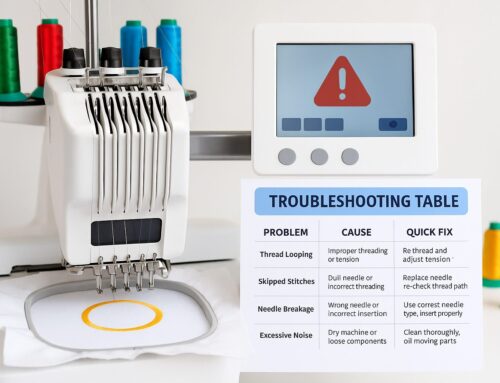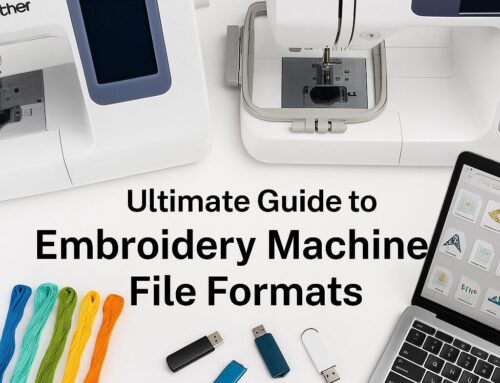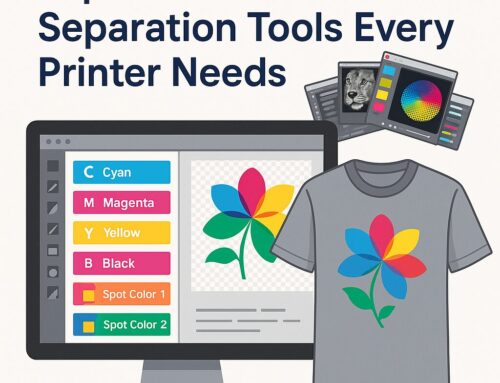What Are DST Pictures in Embroidery?
If you’re part of the embroidery world—whether a hobbyist or running a small apparel brand—you’ve probably heard the term “DST pictures” and wondered how to transform your favorite designs into this format. DST files are the secret sauce behind machine-stitched embroidery, turning flat images into intricate stitch patterns your embroidery machine can understand.
In this guide, we’ll break down everything you need to know about turning JPEGs into DST pictures online, the tools involved, expert advice, and how to avoid common pitfalls.
Let’s get stitching!
🧠 Understanding the Basics: JPEG vs DST Format
What is a JPEG?
A JPEG (Joint Photographic Experts Group) is a standard image file format you’ll find everywhere—from smartphones to websites. It’s a pixel-based image format perfect for photos, logos, and illustrations. However, because JPEGs are raster graphics made of pixels (not stitches), embroidery machines can’t read them directly.
What is a DST File?
DST (Data Stitch Tajima) is a vector-based embroidery file format used by Tajima and compatible embroidery machines. Unlike JPEGs, DST pictures contain stitch placement, direction, and machine command data, allowing embroidery machines to create fabric designs with precision.
Key Differences at a Glance:
| Feature | JPEG | DST |
|---|---|---|
| Purpose | Image viewing/sharing | Embroidery machine instructions |
| File Content | Pixel data | Stitch command data |
| Compatibility | All devices | Embroidery machines |
| Compression | Lossy | Lossless |
| Editable for Stitching | No | Yes |
🎯 Why Convert JPEG to DST?
Still wondering why you need to convert to DST? Here’s why it’s essential:
Machine Compatibility: Embroidery machines only read formats like DST.
Precision Stitching: DST allows for custom stitch types, density, direction, and thread colors.
Scalability: Unlike JPEGs, DST files can be resized or edited without losing stitch accuracy.
Professional Output: DST pictures ensure your embroidery looks polished, clean, and aligned to your brand or creative vision.
🛠️ Free Tools for Converting JPEG to DST Pictures
While expert digitizers offer the best results, here are a few free tools you can experiment with:
1. SewArt
An intuitive embroidery digitizing software that helps convert images to DST files. Good for beginners.
2. Ink/Stitch
A free Inkscape plugin that lets you design embroidery patterns and export them as DST files.
3. Embird
A professional-grade digitizing suite—great for those who want more advanced control over designs.
4. Online Converters (Convertio, Online-Convert)
These web-based platforms can convert images to embroidery formats, but accuracy may vary. Use with caution!
📝 Note: No “automatic” tool will give perfect results. For professional work, hiring a digitizer is always the best option.
🔧 Step-by-Step: How to Convert JPEG to DST Pictures
You have two main options:
Option 1: Use a Free Converter (Example: SewArt)
Download SewArt
Install it from the official website. Make sure your PC meets the system requirements.Upload Your JPEG File
Launch the program and open your image.Preprocess the Image
Remove background noise, simplify colors, and adjust contrast to make the design stitch-friendly.Auto-Convert
Use the “Auto-Sew” feature to generate stitches from your image.Export as DST
Save the file as .DST under the “Save As” menu.
⚠️ Caution: Most online tools won’t deliver clean results, especially for complex logos or multi-color designs.
Option 2: Hire a Professional Embroidery Digitizer
If you want a professional-quality DST picture, hiring a digitizing expert is a wise investment.
Here’s how to do it:
Find a Reliable Digitizer
Research or work with trusted names (like Ez Stitch Digitizing 😉) with great reviews and a solid portfolio.Upload Your JPEG Image
Provide a high-resolution version of your design.Add Notes (Optional)
Mention thread colors, preferred stitch density, fabric type, etc.Get a Quote
Most professionals will send you a price based on complexity and turnaround time.Make Payment
Proceed if the quote fits your budget. Secure platforms like PayPal or Stripe are commonly accepted.Receive Your DST File
You’ll get a downloadable file once digitizing is complete.Request Revisions (if needed)
Reputable digitizers offer revisions to ensure 100% satisfaction.
⚠️ Common Challenges in Converting JPEG to DST Pictures
Poor Image Quality: Blurry or low-res JPEGs are hard to convert.
Software Limitations: Not all free tools handle color transitions or fine lines well.
Time-Intensive Process: Proper digitizing can take hours, depending on complexity.
Cost Misunderstanding: Cheap conversions often lead to messy stitch-outs.
Confidentiality Issues: Some online platforms don’t offer design protection.
✔️ Best Practices for Smooth DST Picture Conversion
Start with a high-resolution JPEG.
Simplify complex artwork for better stitch outcomes.
Choose vector-style logos or bold line art when possible.
Use trusted digitizing services (like us!) for professional jobs.
Always test the DST picture before running large embroidery batches.
💡 Tip: Even if your JPEG isn’t perfect, we can still convert it into a high-quality DST file — no extra charges!
✨ Why Choose Ez Stitch Digitizing?
At Ez Stitch Digitizing, we don’t just convert JPEGs to DST — we transform your ideas into embroidery-ready masterpieces.
✅ 100% manual digitizing by professionals
✅ Fast turnaround & secure delivery
✅ Unlimited revisions for peace of mind
✅ Affordable pricing for hobbyists & brands alike
📩 Contact us today at info@ezstitchdigitizing.com
💬 Or message us on Facebook
📢 Final Thoughts: Ready to Create Your Own DST Pictures?
Whether you’re stitching a personal project or managing apparel production, DST pictures are your gateway to flawless embroidery. With the right tools—or by teaming up with a skilled digitizer—you can convert any JPEG into an embroidery file that stitches beautifully.
Don’t waste time with unreliable converters or low-quality results.
👉 Get a free quote now or message us to get started on your next DST file.





